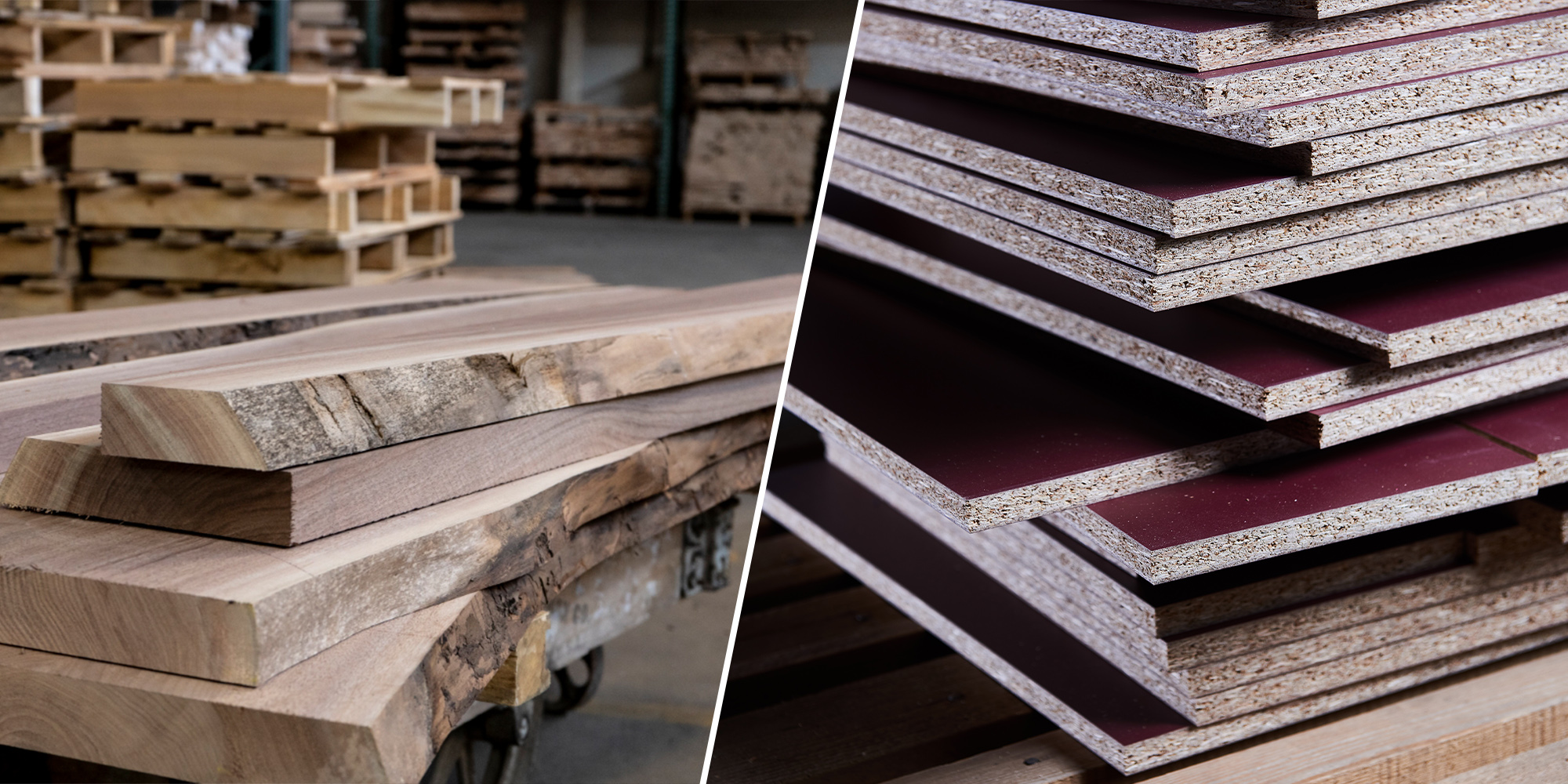In an era where nearly anything can be manufactured, synthetic products are often more sustainable and of better quality than their organic counterparts. How then do real and engineered woods compare? The answer isn’t straightforward. This article can help you decide by exploring how both real and engineered wood furniture are produced—and by examining the pros and cons of each.
What’s the Difference?
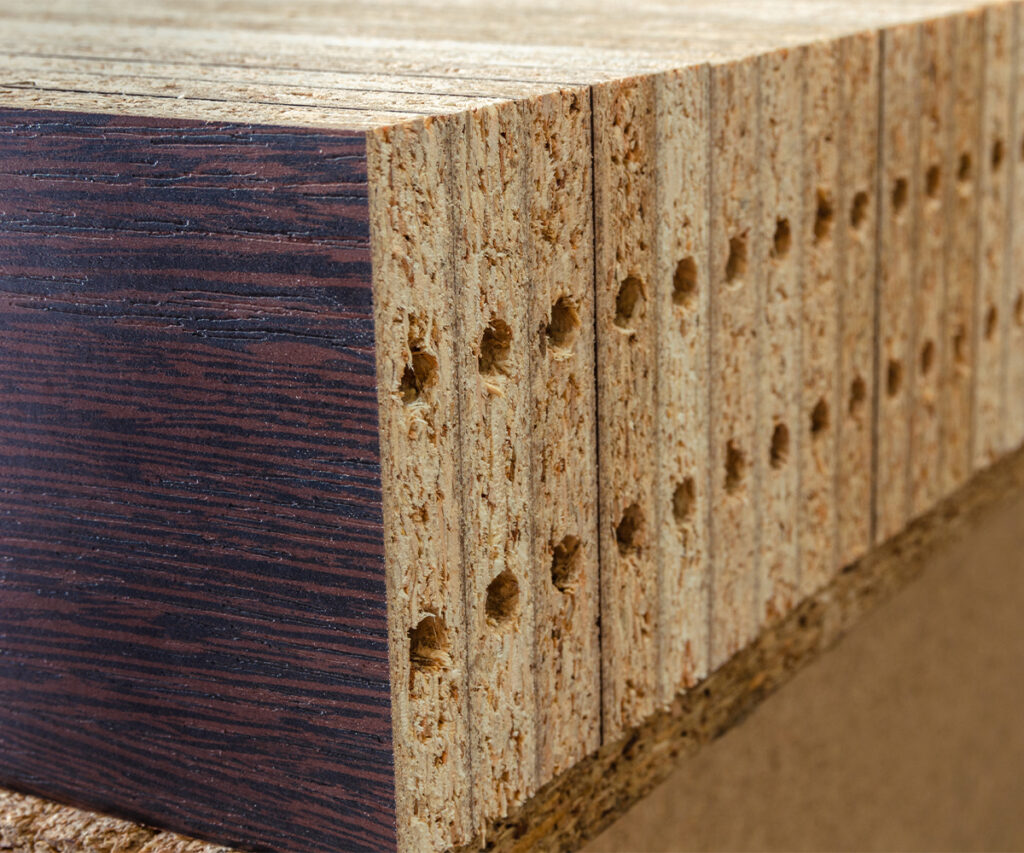
Engineered wood furniture still uses real wood, just not in its original form. It’s made from a wood by-product called particleboard. Sawmills and lumber manufacturers generate tons of wood chips, sawdust, and shavings daily as they process logs and boards. Even in the late 1800s, mills were already searching for ways to use this detritus, and some began experimenting with particleboard. However, it wasn’t until the post–World War II consumer boom that the demand for cheaper furniture pushed particleboard into the mainstream.
Today, manufacturers have refined the process. They dry and sort the wood by-products into precise size categories, then press them into composites using resin, water, wax, and chemical hardeners. After sanding the boards to create even surfaces, they are covered with printed paper, plastic, or real wood veneers. Finally, manufacturers treat the boards like lightweight lumber and use them to build furniture.
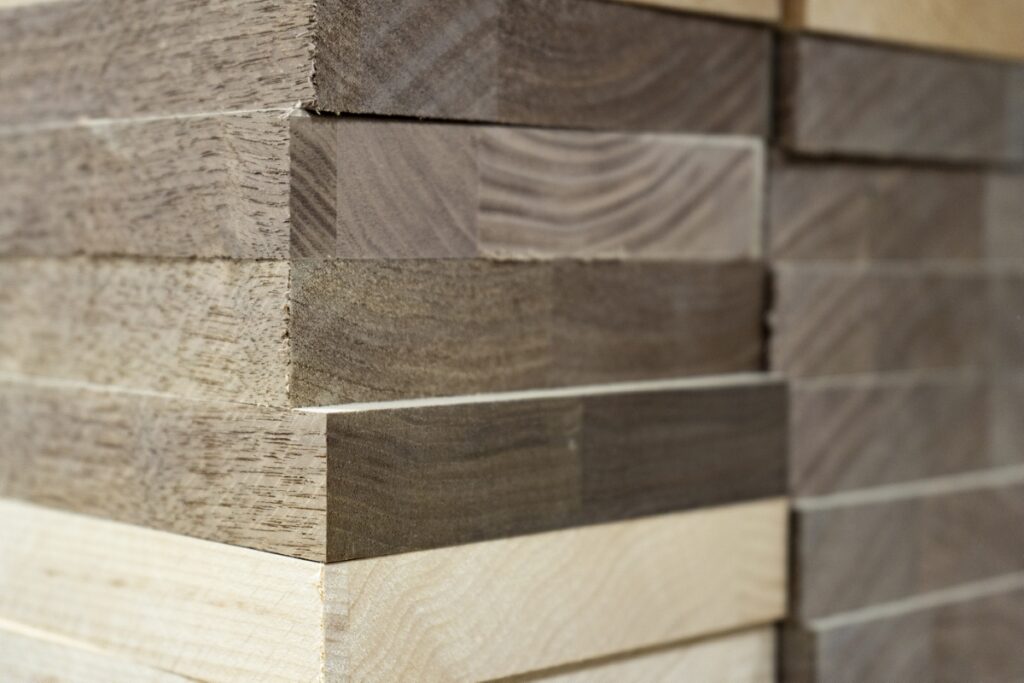
On the other hand, real wood furniture usually comes from hardwoods like oak, cherry, maple, or walnut. This wood is usually sourced semi-locally in the United States, buying directly from regional lumber mills. Workers cut and dry the wood at the mill before selling it to manufacturers. In the United States, a few of the biggest manufacturers include Stickley, Daniel’s Amish, and MAVIN. Located on the East Coast, they source most of their wood from their own states, cutting down on fuel costs and air pollution. There, craftsmen cut, sand, and join the furniture.
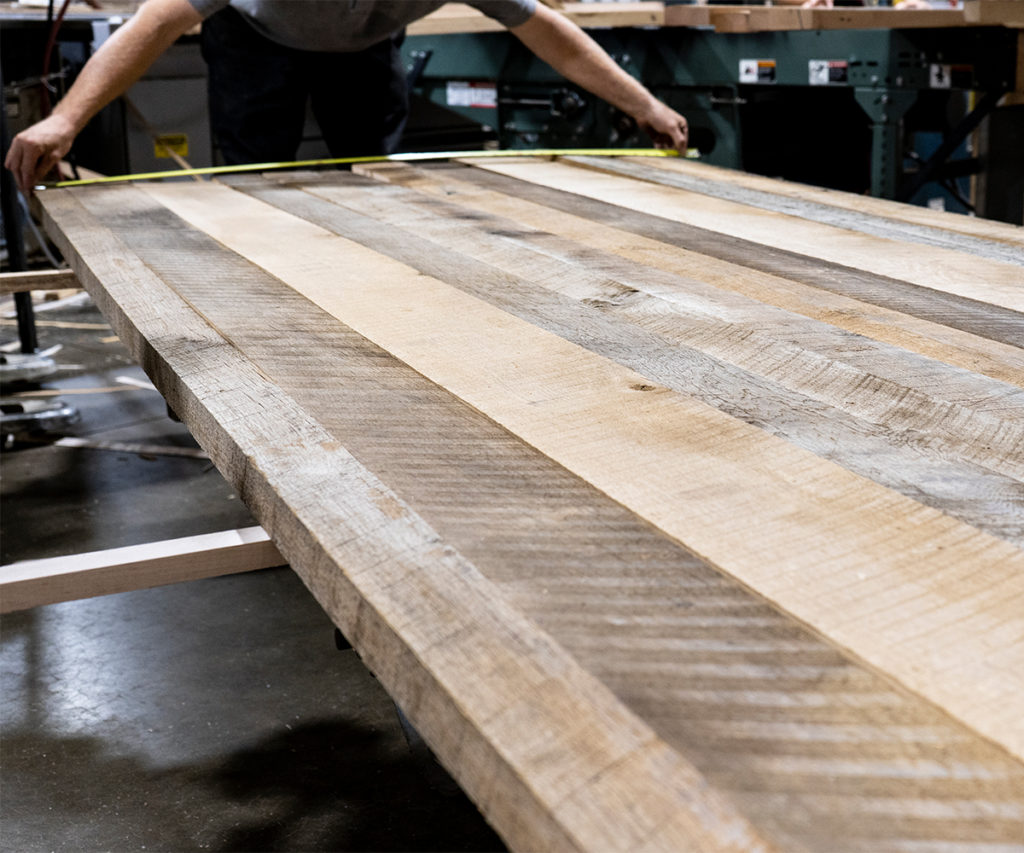
Amish furniture makers, who supply the furniture for thousands of small retailers throughout the United States, have created their production chains. One Amish sawmill may purchase logs from nearby forests, while another shop shapes or bends the wood using time-honored techniques. A third shop often buys these partially crafted components and assembles them into finished furniture. Because the Amish tend to distrust large-scale operations, they avoid building factories with high overhead. Many but not all Amish furniture shops employ just three to five people, and each worker plays a key role in ensuring quality from start to finish.
Not All Wood Is Created Equal
Curious how engineered wood stacks up against real wood? Here’s a quick side-by-side comparison to help you decide which suits your space, budget, and lifestyle.
| Feature | Engineered Wood | Real Wood |
|---|---|---|
| Price | Low | High |
| Lifespan | <10 years | 20+ years |
| Maintenance | Low | Medium – High |
| Repairability | Low | High |
| Aesthetic Appeal | Artificial grain | Natural grain |
| Environmental Impact | Mixed (recycled) | Low if sustainable |
| Customization | Limited | High |
Disadvantages of Engineered Wood Furniture
While engineered wood furniture is a popular and affordable option, it presents several notable drawbacks that can outweigh its lower price point.
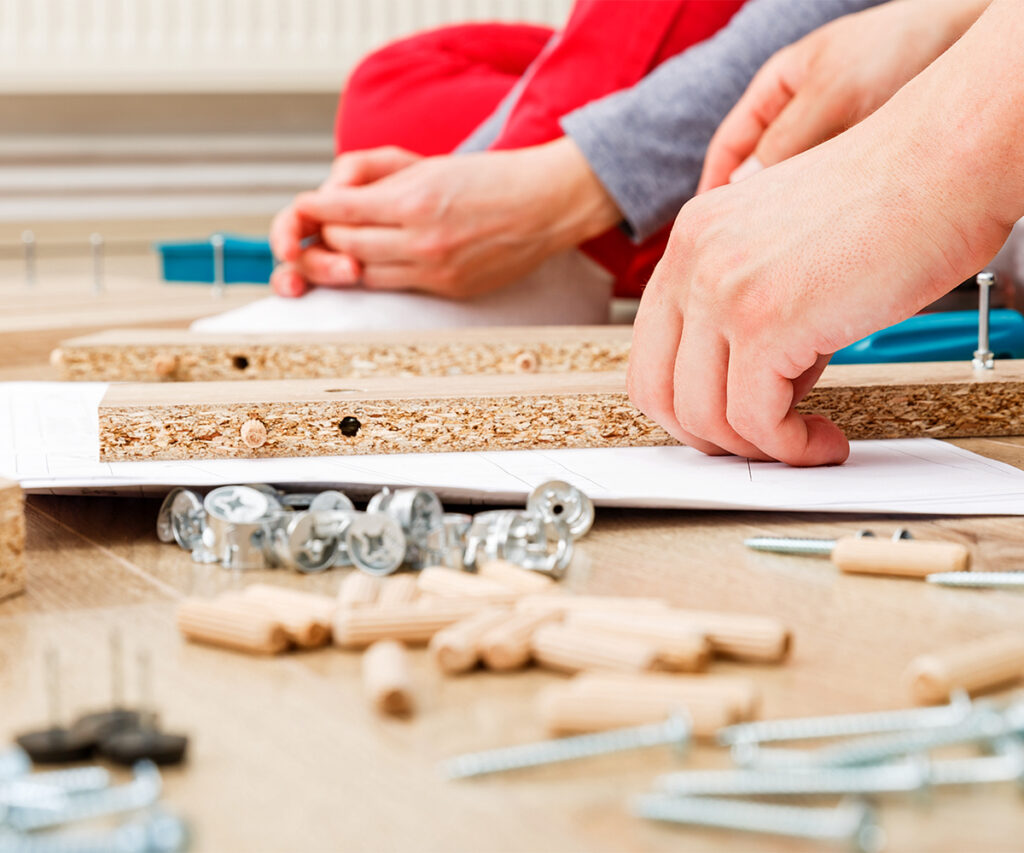
To reduce costs, manufacturers often require consumers to assemble the furniture themselves. Even though particleboard undergoes quality checks, a single poorly placed screw or nail can cause a corner to break off. Once it breaks, the piece typically falls apart, making repairs difficult or impossible. Since the primary goal of engineered wood is to save money, factories that produce it occasionally sacrifice quality control.

Engineered wood also tends to look inexpensive. Many surfaces are created using printed paper or plastic to mimic wood grain, but a trained eye can easily spot the difference.
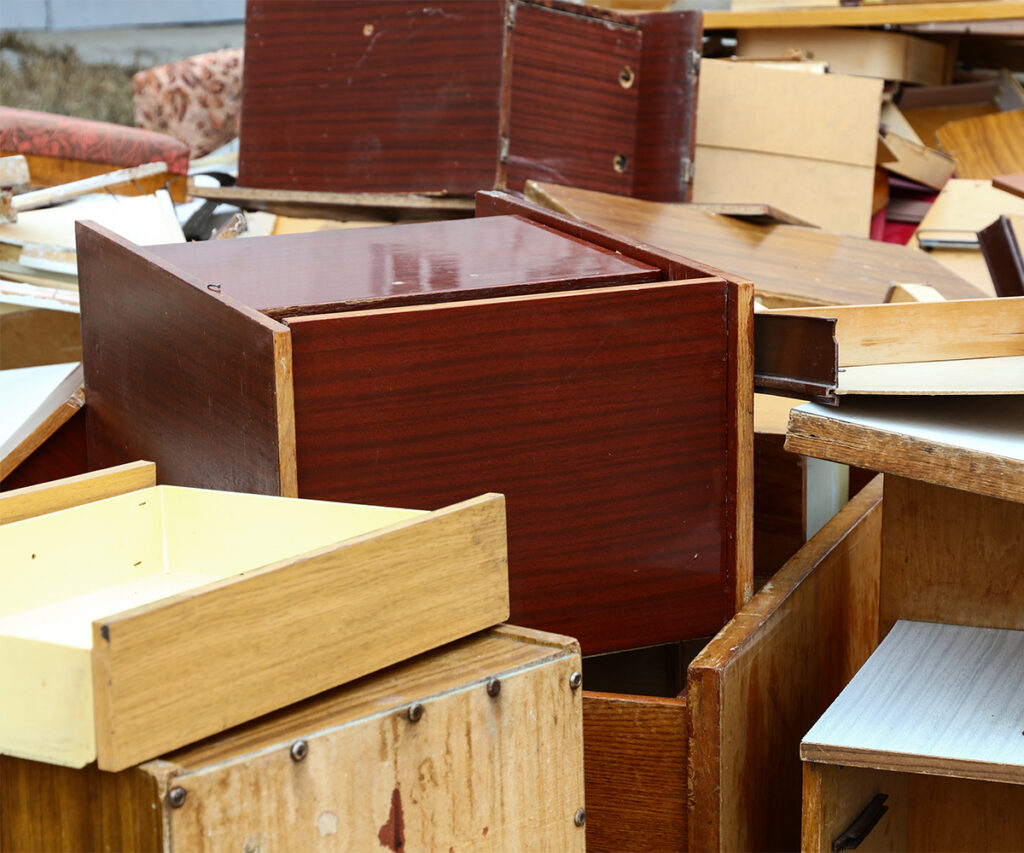
Finally, engineered wood furniture usually lasts less than ten years. As a result, millions of tons of it end up in landfills each year. The material’s short lifespan means that demand often outpaces supply, pushing manufacturers to produce more at a rate that can strain environmental resources.
Disadvantages of Real Wood Furniture
Real wood furniture typically has a higher price tag. Because of the cost, customers expect quality, but the higher cost doesn’t ensure an indestructible piece. Cherry, the softest commonly used hardwood, easily dents and scratches, and even harder oak can scratch. Plus, refinishing a damaged piece might alter its original appearance.
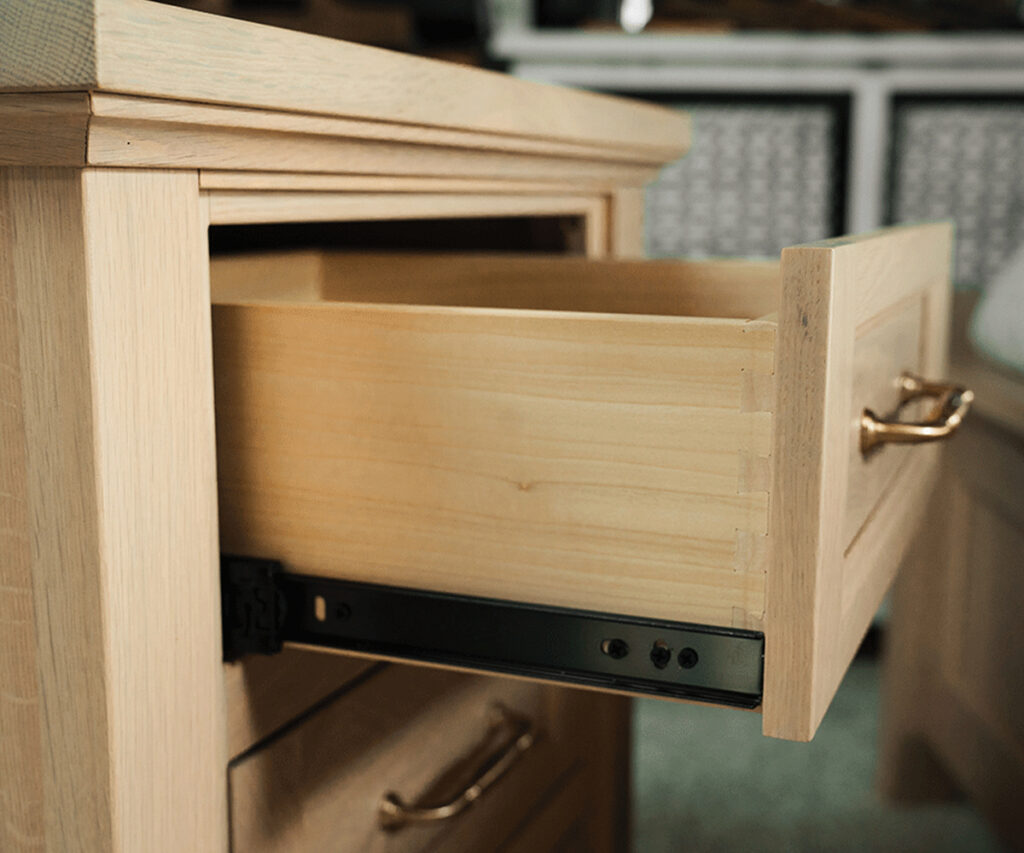
Each piece of furniture is only as strong as its weakest joint. If a maker uses glue instead of traditional wood joinery, the furniture will break more easily. For any piece with drawers, it’s worth checking the back—dovetailed joints often indicate a higher-quality build. Though there are exceptions, most Amish furniture includes techniques like dovetails, mortise and tenon, and other joinery methods.

Another drawback is the wait time. Real wood furniture, especially Amish-made, is often made to order. Custom pieces may take months, unlike mass-produced items that ship the same day. Shoppers who need the pieces sooner will find this frustrating.
Finally, making genuine wood furniture with fair wages and high standards increases costs significantly. And while many customers value those traits, others have different budgets or design preferences.
Benefits of Engineered Wood
For various reasons, most furniture on the market today is made from engineered wood. High-grade particleboard resists scratches and dings better than some softwoods.
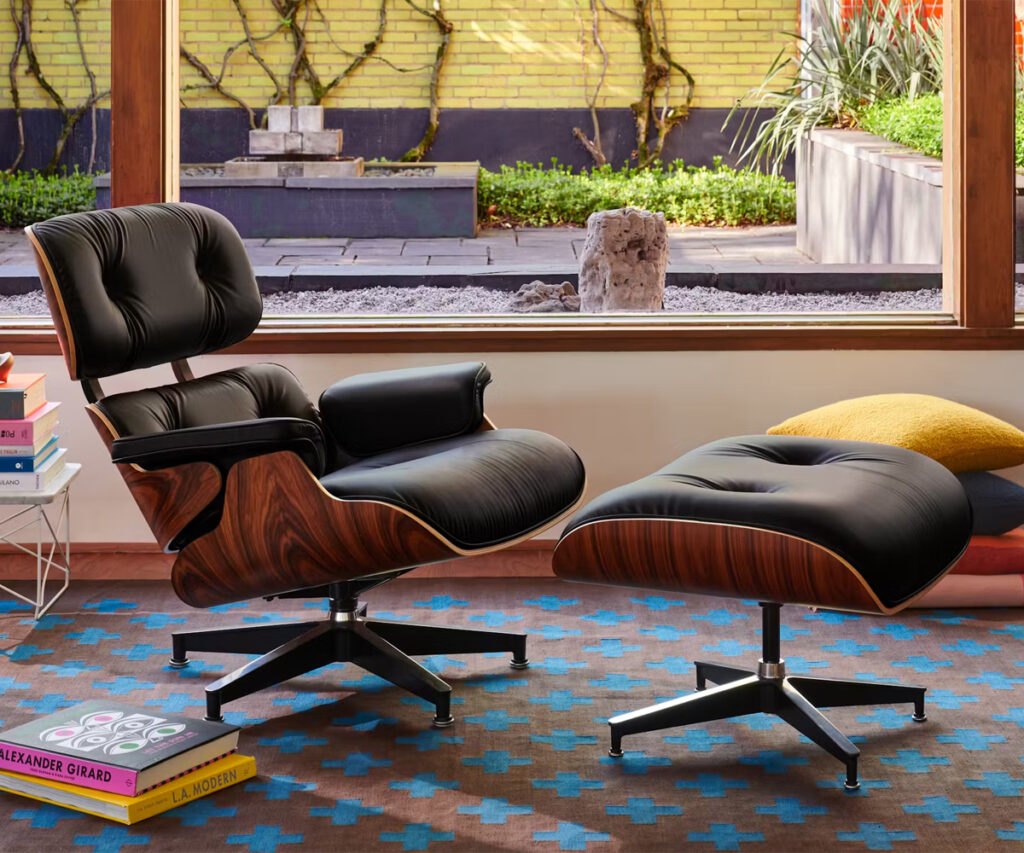
Because manufacturers can easily create large sheets of particleboard, designers enjoy more freedom when shaping modern pieces. This flexibility allows brands to follow trends more easily and produce furniture that matches current styles. Some iconic designs—like the Eames Lounge Chair—use molded plywood with wood veneer, allowing affordable versions to be sold mainstream.

Engineered wood is also far more affordable than solid wood. For many families, function matters more than longevity or craftsmanship. For those who have children, choosing cheaper engineered wood means less stress about damage or wear and tear.
If done responsibly, engineered wood supports sustainability. Solid wood furniture requires near-perfect cuts with minimal defects. In contrast, engineered wood uses wood chips, shavings, and sawdust—materials that would otherwise go to waste. By recycling these by-products, manufacturers reduce their environmental impact. Engineered wood offers a practical alternative in an age of rising lumber scarcity.
Benefits of Real Wood
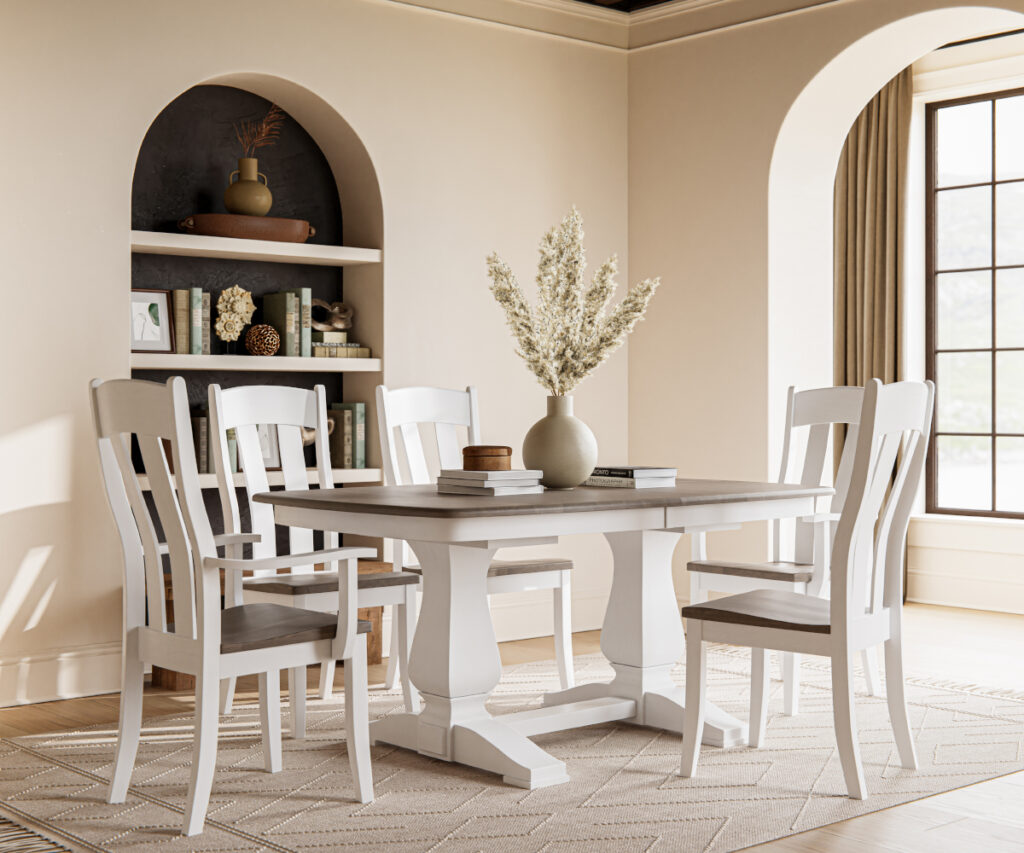
Investing in real wood furniture means investing in quality, craftsmanship, and long-term value.
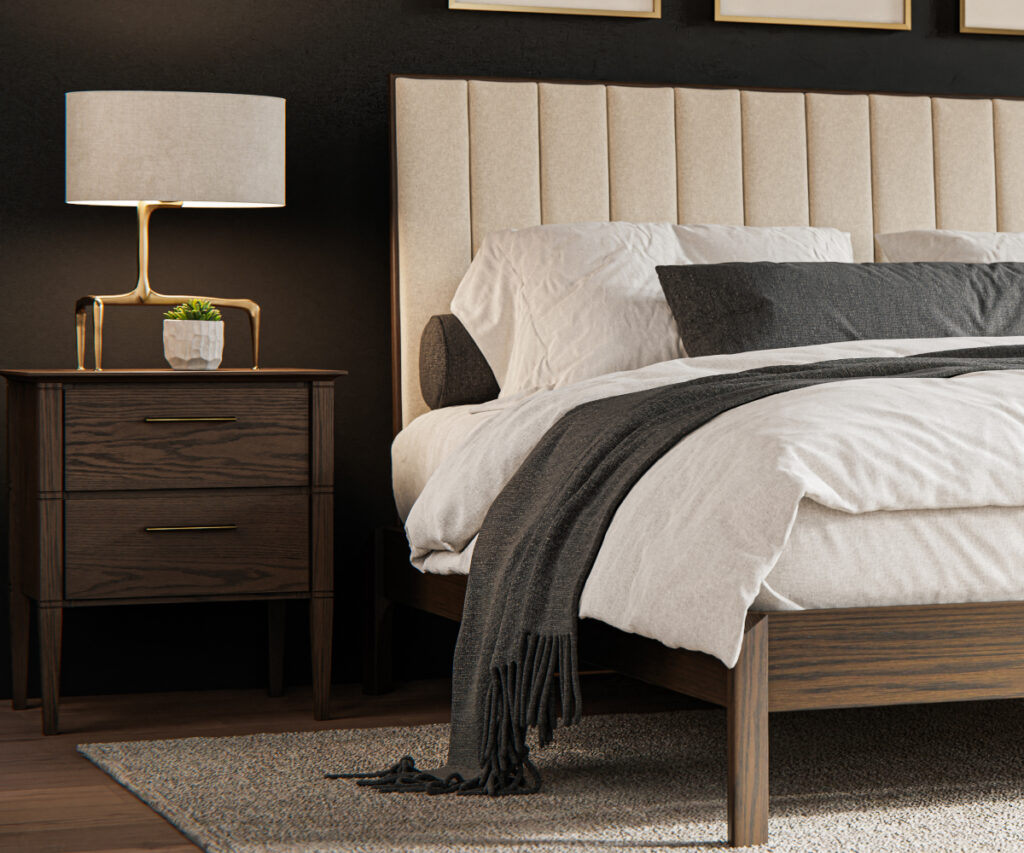
It is beautiful, one-of-a-kind, and sustainable. Its texture and grain complement nearly any style of décor and bring a natural element into the home. Rather than disguising imperfections, skilled craftsmen highlight knots, cracks, and variations to showcase each piece’s uniqueness. Woodworkers often develop their craft over a lifetime, learning more about trees and their potential.
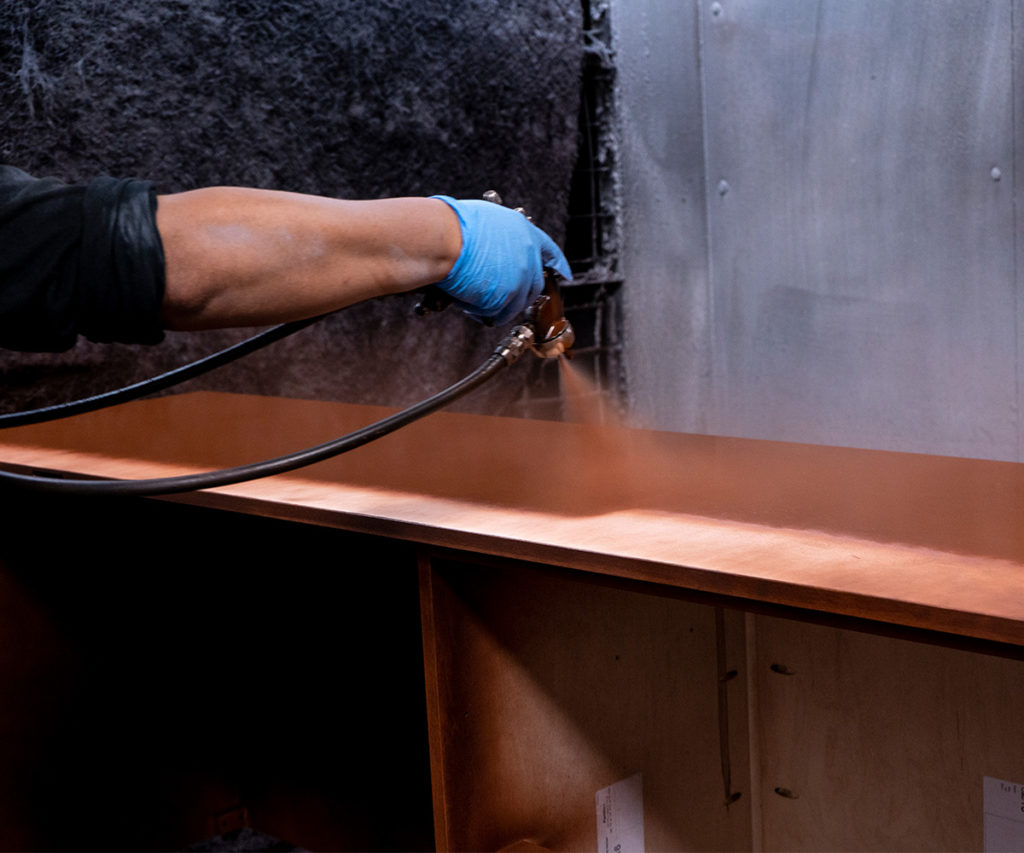
Retailers often let customers choose stains and finishes to match their personal aesthetic. If tastes change over time, owners can sand and refinish the piece. Natural wood is endlessly customizable.
It also ages well, developing a patina that enhances its character and value. Real wood is strong and built to endure daily use for decades. Surface damage can often be repaired, and furniture can be repurposed or reimagined to fit new spaces or styles. Because of its resilience, solid wood rarely ends up in landfills. Real wood pieces stick around, lasting for years, looking better with age, and often becoming favorites that get handed down or reused in new ways.

